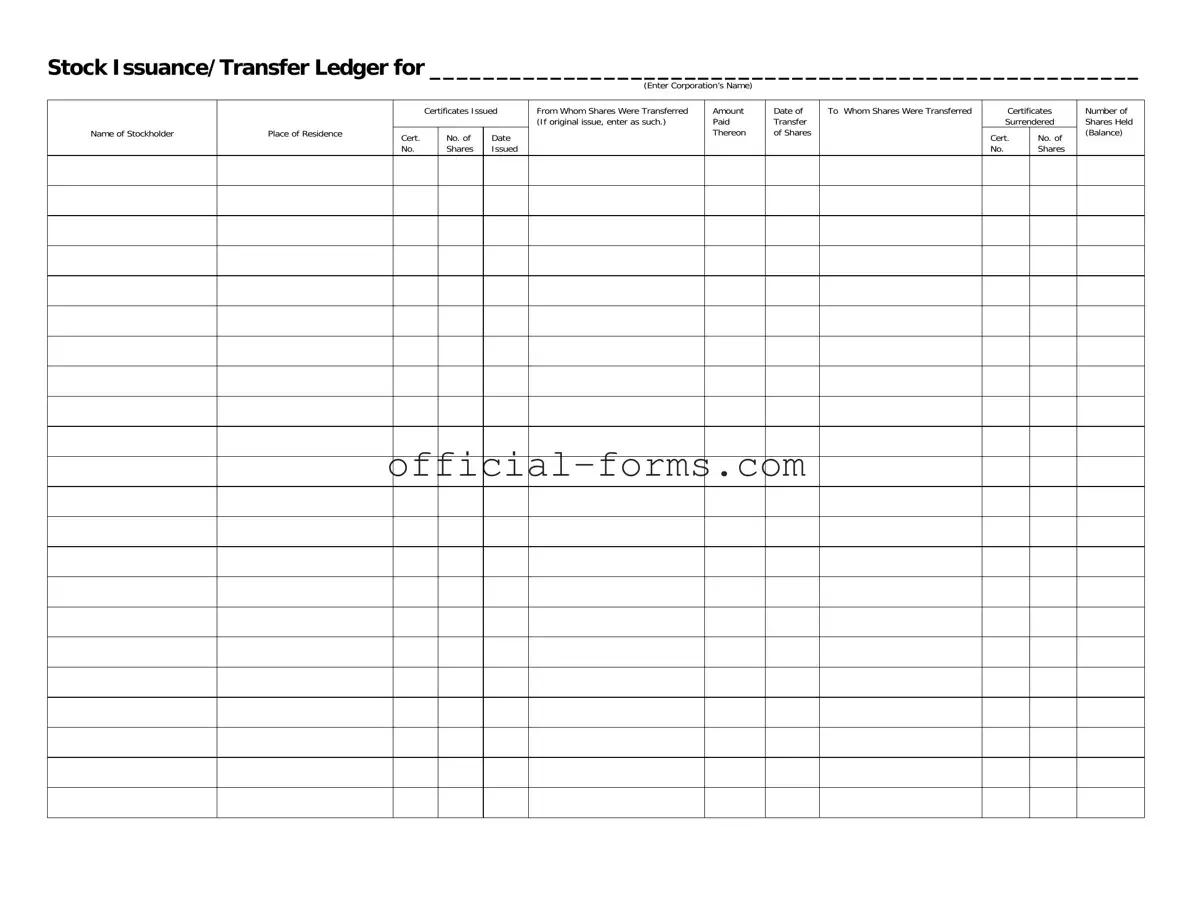Blank Stock Transfer Ledger Form
The Stock Transfer Ledger form is a crucial document used to record the issuance and transfer of stock within a corporation. It captures essential details such as the stockholder's name, the number of shares issued, and the dates of transfer. This form helps maintain accurate records of stock ownership and facilitates smooth transactions between parties.
Open My Stock Transfer Ledger Now
